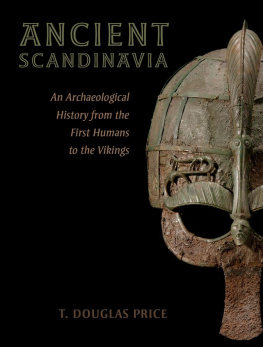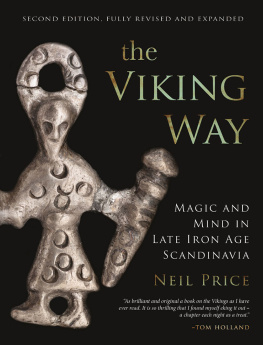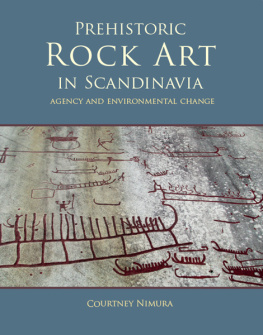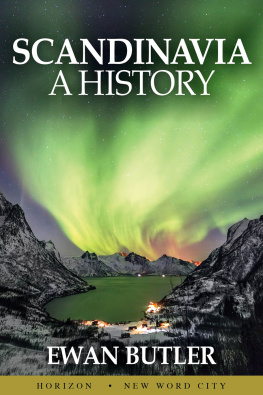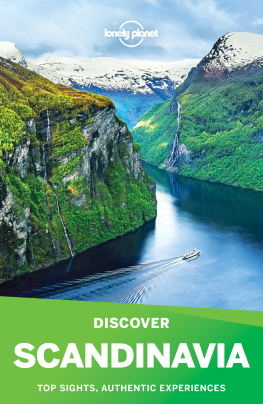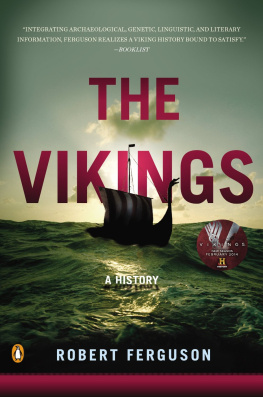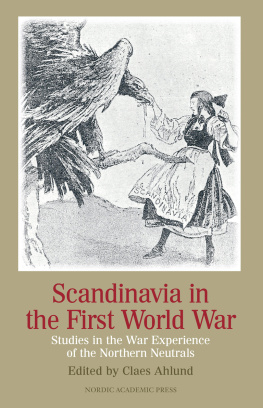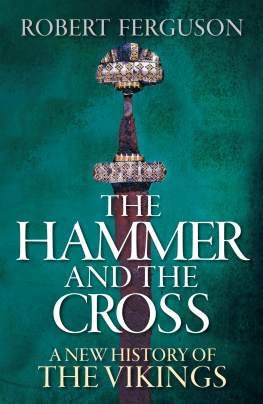ANCIENT SCANDINAVIA

Oxford University Press is a department of the University of Oxford. It furthers the Universitys objective of excellence in research, scholarship, and education by publishing worldwide.
OxfordNew York
AucklandCape TownDar es SalaamHong KongKarachi
Kuala LumpurMadridMelbourneMexico CityNairobi
New DelhiShanghaiTaipeiToronto
With offices in
ArgentinaAustriaBrazilChileCzech RepublicFranceGreece
GuatemalaHungaryItalyJapanPolandPortugalSingapore
South KoreaSwitzerlandThailandTurkeyUkraineVietnam
Oxford is a registered trademark of Oxford University Press in the UK and certain other countries.
Published in the United States of America by
Oxford University Press
198 Madison Avenue, New York, NY 10016
Oxford University Press 2015
All rights reserved. No part of this publication may be reproduced, stored in a retrieval system, or transmitted, in any form or by any means, without the prior permission in writing of Oxford University Press, or as expressly permitted by law, by license, or under terms agreed with the appropriate reproduction rights organization. Inquiries concerning reproduction outside the scope of the above should be sent to the Rights Department, Oxford University Press, at the address above.
You must not circulate this work in any other form and you must impose this same condition on any acquirer.
Cataloging-in-Publication data is on file at the Library of Congress
ISBN 9780190231972
eISBN 9780190231996
CONTENTS
WHY SHOULD an American archaeologist write a book on the prehistory of Scandinavia? Its a fair question, but theres a reasonable answer. I have been conducting archaeological research on the last hunters and the first farmers in Scandinavia since 1978, excavating at a number of different places in eastern Denmark. I have spent eight full years in Denmark since 2001 with my Danish wife and daughter. I now live much of the year in Copenhagen. I have traveled substantially in the larger region, visiting archaeological sites and touring different areas. The impressions left by these visits have been powerful, fostering a huge appreciation for the people of the past and their accomplishments. I am writing this book to share some of that Scandinavian prehistory, along with some impressions of the places and objects that have survived.
The archaeology of northern Europe provides a perspective on the human experience, of change and development in human societyfrom the initial colonists some 13,000 years ago through the arrival of the first farmers 6,000 years ago, the upheavals that accompanied the spread of bronze and iron, and the extraordinary diaspora of the Vikings shortly before AD 1000. The prehistory of Scandinavia has witnessed humans adapting to changes in the environment, both natural and cultural, that have fostered what is today a region of innovative technological, social, and political development.
For various reasons, many peopleincluding a lot of archaeologistsare unaware of how extraordinary the past of Scandinavia really is. Much of the archaeological literature within Scandinavia is published in the native languages and frequently does not reach a wider audience. The region is often considered to be outside the mainstream of archaeological research, which tends to focus on the earliest, or the monumental, or the first civilizations of the Old and New Worlds.
But in fact, the archaeology of Scandinavia is extremely useful for understanding our human past. The occupants of Scandinavias prehistory left traces of their presence in many different ways, from the rock art of the Stone Age to the giant stone tombs of the first farmers, the earthen burial mounds that dot the skyline from the Bronze and Iron Ages, and the massive fortifications of the Viking period. It is hard to travel in Scandinavia without seeing the evidence of that past. Moreover, archaeologists have been working here for 200 years to expose the remains, catalog the finds, display the evidence, and inform the public. Archaeology is a popular topic in museums, schools, magazines, on television, the Internet, and other outlets. There are some 80 local museums in Denmark alone that provide access to the remnants of the past.
The book will cover a period from approximately 13,000 BC to AD 1050 in a few hundred pages. I have chosen to divide this volume into chapters that follow the basic chronology of Scandinavian prehistory from the oldest Stone Age to the Viking period. I will introduce each of these periods at the beginning of the appropriate chapter and provide an overview of the context and events of the time. Any archaeological story has to contain a good bit of detail on the position of these places and things in time and space. My goal is to keep discussion of those sometimes dry facts brief and to spend more ink on the actual archaeological evidence. I have had to be selective in the choice of places and things to discuss. I have chosen to focus on what I regard as the most informative and the most spectacular. At the same time, of course, I have had to leave out a great deal. I hope you will enjoy my choices.
I took my first academic job at the University of Wisconsin-Madison in 1974 as an assistant professor of European archaeology. I began doing fieldwork in Denmark in 1978. Some 25 years ago, I married a Danish archaeologist. It is a good arrangement. We have a Danish-American daughter in Copenhagen. Since my retirement in 2009, we live primarily in Denmark. Over the years, I have had a chance to become acquainted with Scandinavian society and to appreciate some of the similarities and differences with my own upbringing in the United States.
Scandinavians are in general liberal on most issues, cosmopolitan in taste, demanding in design, frugal, family-focused, sociallyrather than individuallyoriented, a fascinating combination of old-fashioned morality and postmodern perspectives. Of course there are national rivalries. Danes tell jokes about the Swedes, Swedes tell jokes about the Norwegians, and Norwegians think the others laugh at them. Everyone feels superior. It is as it should be.
There are several very good books (a few in English) on the archaeology of Scandinavia or parts thereofHaakon on Arkeologi i Norden, and Anders Hagens 1967 Norway. These volumes are, however, largely out of date. A great deal of archaeology has been carried out in the last 25 years in Scandinavia in response to development and new heritage laws. Our knowledge and understanding of almost every period has changed substantially. There are also a number of new methods in place and technologies in action that offer new information about the past. In part, then, I hope to provide an updated view of the prehistory of this fascinating area. I also hope that the perspective of an informed and enthusiastic outsider might offer some new insight and appreciation. The archaeology of Scandinavia is simply remarkablerich, varied, and in many cases spectacular.
I must also admit to bias in my perspective. My own focus has been on Denmark for the last 35 years, and that emphasis comes through in this volume. There are more sites and finds described from Denmark than from elsewhere in Scandinavia. At the same time, I think that many of my Swedish and Norwegian colleagues might even admit that for such a small country, Denmark is blessed with an extraordinarily rich past. There is a reason that the archaeological chronologies and perspectives on the Scandinavia peninsula tend to have a Danish flavor.

